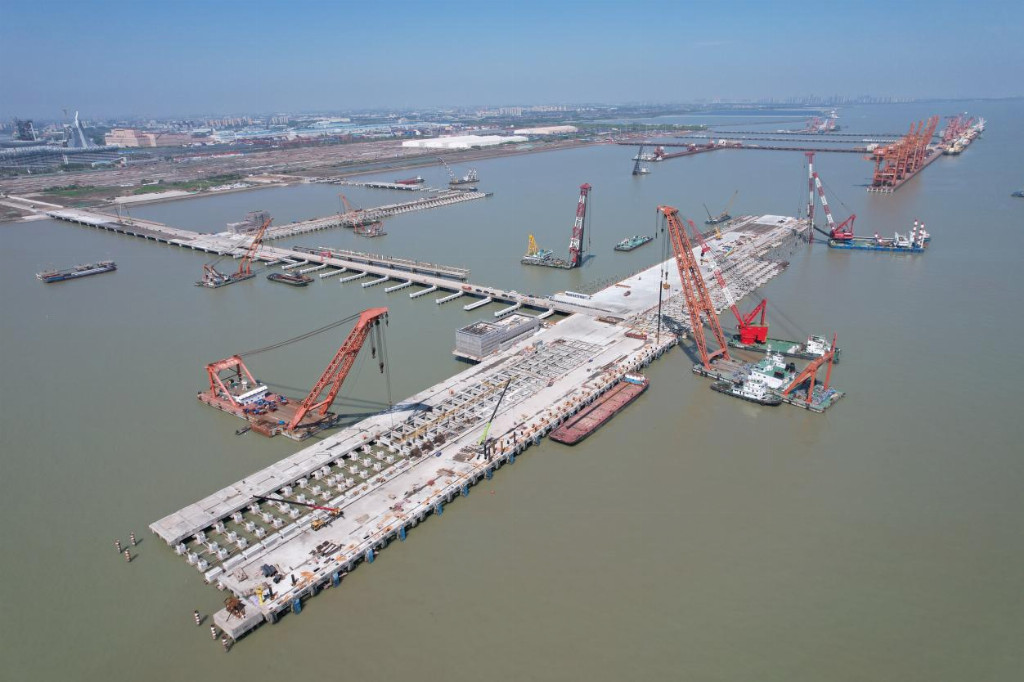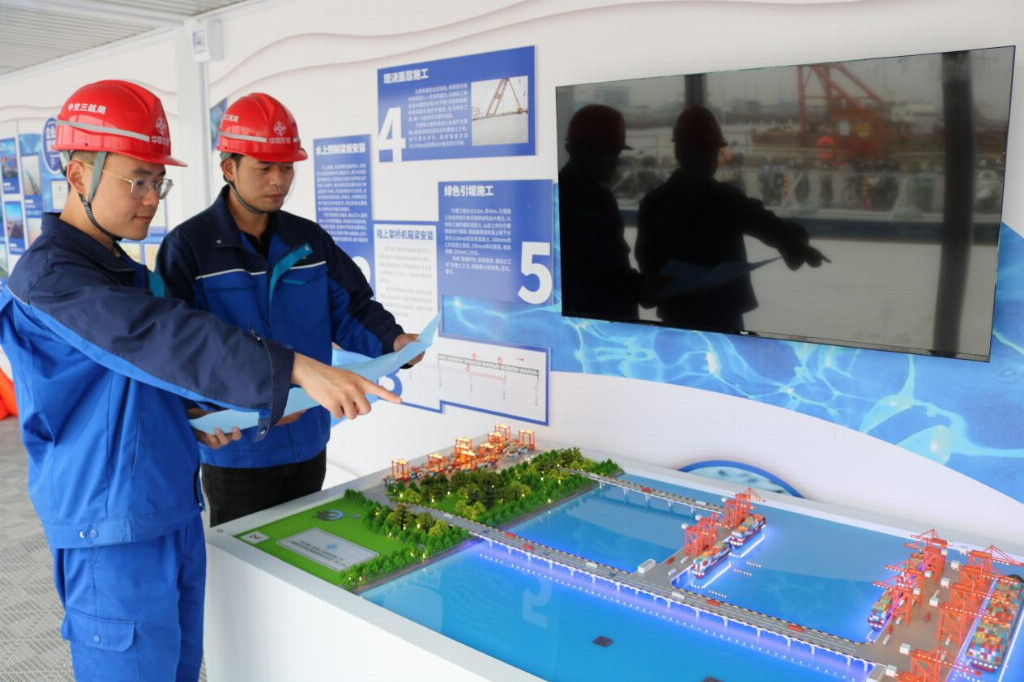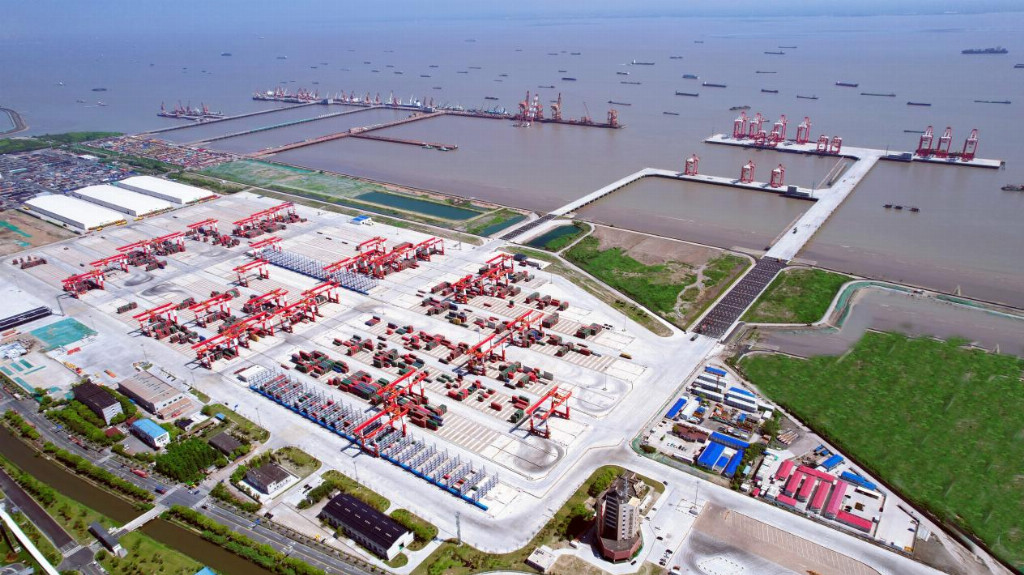The project, located in Luojing Town, Baoshan District, Shanghai, on the southern bank of the south branch of the Yangtze River Estuary, is the first systematic renovation project for an old dock in China. It commenced construction on December 25, 2022, and after 11 months of efficient construction, a container dock with a length of 1.4 kilometers and a width of 115 meters was successfully completed.
After renovation, both the front and rear edges of the Luojing Container Terminal can accommodate container ships, boasting the widest berth in the country. The terminal adopts a single-row, three-tier container stacking design, featuring a total of two 100,000-ton and three 10,000-ton berths, with a designed annual throughput capacity of 2.6 million TEUs.

The first phase of the Luojing Wharf renovation project is not only a key project in Shanghai, but also a typical demolition, renovation, and construction project. To control the generation of construction waste from the source, the project team innovatively adopted a "graded utilization" strategy through the utilization of shoreline resources and optimization of port area functions.
70% of the old structures in the port area have been efficiently reused through three methods: overall demolition and reconstruction, partial renovation, or utilization in their original state. For the remaining 30% of old buildings that must be demolished, such as old dock square piles and anti-collision steel pipe piles, optimized design has been carried out. More than 60,000 cubic meters of concrete debris from demolition has been used to fill the subgrade of newly constructed roads, achieving "zero external transportation" of construction waste.
This measure not only reduces environmental impact, but also explores a new path for resource intensification amid the wave of port renovation nationwide.

The project is located near the experimental area of the Yangtze River Coilia Mystus National Aquatic Germplasm Resources Protection Zone, adjacent to the Chenxing Drinking Water Source Protection Zone. During the construction process, the team scientifically planned the operation time and progress, strictly controlling the impact of construction activities on the aquatic ecological environment.
To ensure construction accuracy while protecting the environment, the project adopted multiple smart technologies. Addressing the technical challenge of precise underwater insertion of new and old pile foundations, the project team innovatively applied LiDAR underwater scanning technology to accurately obtain the parameters of existing pile foundations. By integrating BIM modeling with long-distance marine piling positioning technology, they achieved millimeter-level precise "docking" between the new and old structures, providing solid technical support for the "zero-carbon" upgrade of the dock.
Meanwhile, in response to the complex situation of the "short and wide" wharf structure, the construction waters being closely adjacent to the main channel of the Yangtze River and extremely narrow, and the simultaneous operation of over 30 ship machines during peak periods, the project innovatively established an on-site joint dispatching room. Relying on digital simulation, ship machine positioning, and a smart construction site system, it achieved intelligent dispatching and efficient coordination of ship machine resources, effectively ensuring construction safety and order in complex environments and reducing disturbance to aquatic organisms.

After the completion of the terminal, it achieved full electric drive for loading and unloading equipment and full coverage of shore power in terms of green operation, resulting in a high proportion of clean energy up to 97% and significantly reducing carbon emissions. Currently, the first phase of Luojing Terminal has been operating stably for one year, thanks to its successful green practices.
Leveraging its professional performance during the first phase of construction, CCCC Third Harbor Engineering Co., Ltd. subsequently undertook the construction of the second phase project, including the hydraulic wharf and road yard sections. It is reported that the overall progress has reached 30% and is expected to be completed and handed over in July 2026.
After the overall operation of the second phase of the project, it will be upgraded in coordination with the first phase, promoting full-category container transportation and adding an annual throughput capacity of 10,000 to 400,000 TEUs. It will facilitate the full integration of Shanghai Port through digitalization, intelligence, and green transformation, effectively supporting the national "dual circulation" and Yangtze River Economic Belt development strategies, and providing strong support for high-level opening up. (Wang Yikun, Third Harbor Engineering Bureau)
